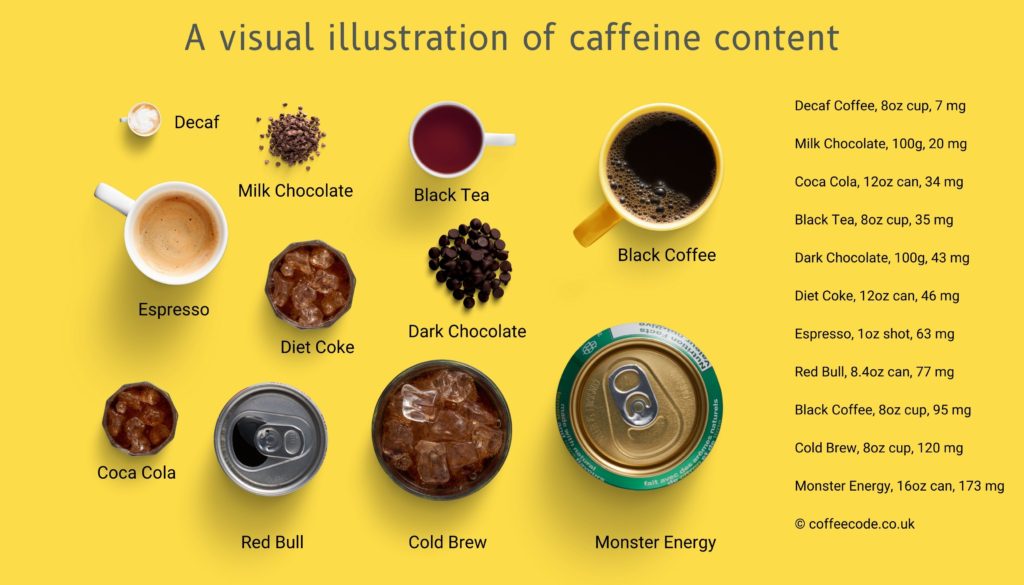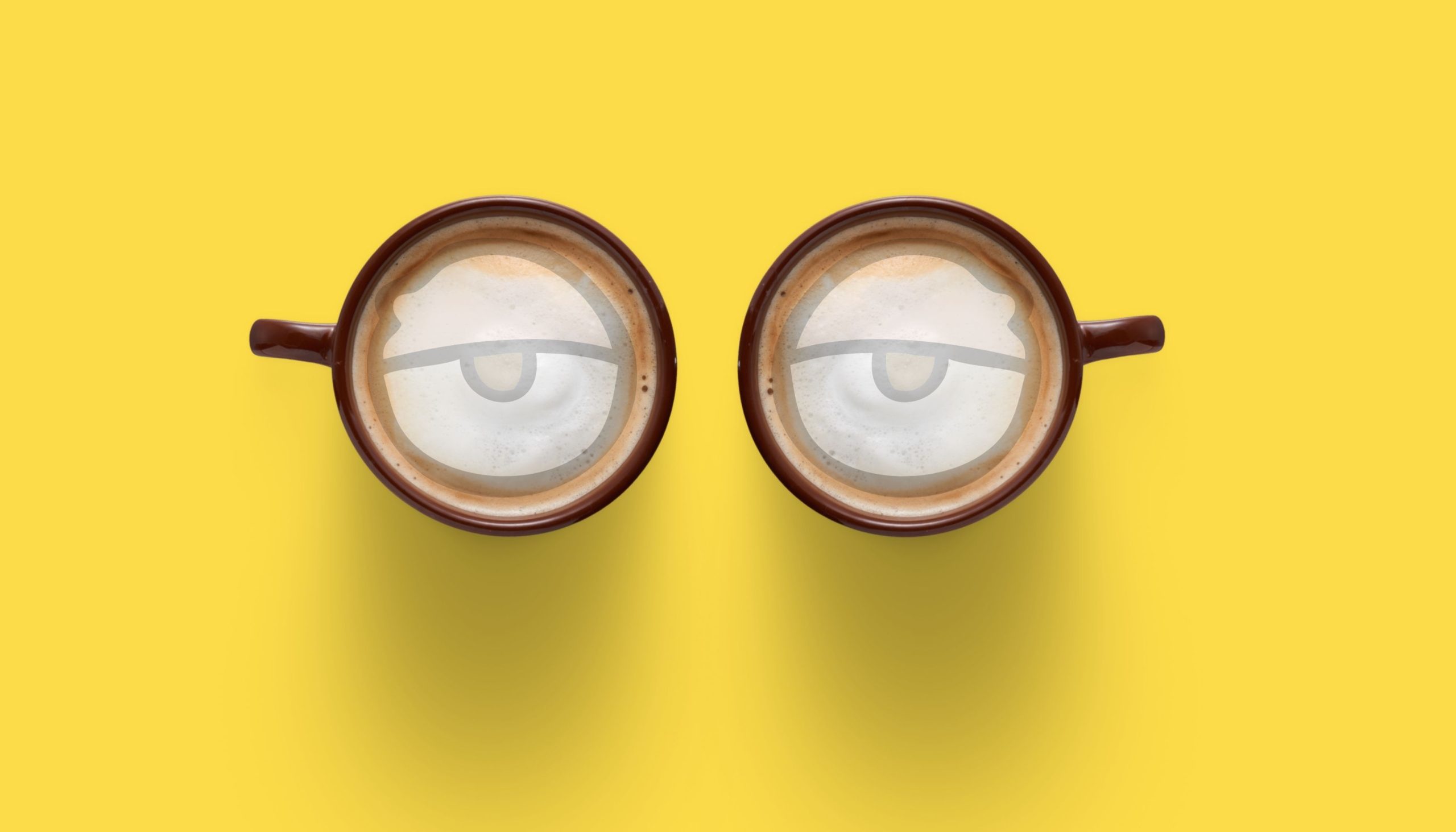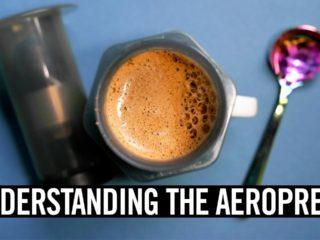How much caffeine in decaf coffee? (hint: it’s not caffeine free)
It’s a question we’re often asked: how much caffeine is in decaf coffee? You may be surprised to know that it is not entirely caffeine-free. We take a look at how much you can expect to find in a regular cup of coffee and how the process of decaffeination works.
There is up to 7mg of caffeine in an average 8 oz (235ml) cup of decaf coffee, compared to 95mg in a regular cup of coffee.
To begin with, we need to break the news: decaffeinated coffee is not entirely caffeine-free. Companies marketing decaf coffee have positioned decaffeinated coffee as caffeine-free. This might come as a surprise to you, but it’s a surprisingly complicated subject and it’s almost impossible to remove all the caffeine from coffee without destroying the flavour in the process. So if you’re trying to cut down, or if you suffer from caffeine sensitivity, or you just want to have a bedtime coffee, read on, and find out quite how much caffeine you’re drinking.
And there’s a spoiler ahead: you might be eating caffeine as well.
What is caffeine? And why does decaf coffee have caffeine in it?

Caffeine is a totally natural stimulant that’s found in the fruit, leaves, or beans of coffee, tea, cacao, and guarana plants. A mild stimulant that boosts your alertness and energy levels, it is absorbed roughly 45 minutes after consuming, and it peaks in your bloodstream anywhere between 15 minutes to 2 hours. In its raw form, it’s a bitter white powder, and if you want the full technical term for it, it’s called 1,3,7 trimethylxanthine. Now that’s a mouthful.
Did you know that we consume over 100,000 tonnes of caffeine a year around the world? That’s the equivalent weight of 14 Eiffel Towers.
What is Decaf Coffee? And is there caffeine in Decaf Coffee?
How much caffeine is there in decaf coffee, for it to be classified as decaffeinated coffee? European regulations state that “the caffeine content of decaffeinated coffee should not exceed 0.1% in the case of green beans or 0.3% in the case of coffee extracts (instant coffee) on dry matter basis”. As a result this is frequently and incorrectly portrayed as having 99.9% of the caffeine extracted, in the case of whole coffee beans. This is not the case. The caffeine content should not exceed the required percentage of the total dry matter of the coffee, i.e. for every 100g of green coffee beans, the caffeine content should be a maximum of 0.1 grams.
If you want to see the small print, it’s on the UK Government website here.
So how much caffeine is in decaf coffee?
On average, taking into account all the variables, there is between 2 and 7mg of caffeine in an 8oz (235ml) cup of coffee. By way of comparison, a regular cup of coffee contains between 70 to 140mg for the same size cup.
The caffeine content of various other drinks (and foods!)
Here’s a comparison of how much caffeine there is in a range of other drinks, including how much caffeine there is in decaf coffee. However, you may be surprised to learn that there’s caffeine in chocolate, ice cream, frozen yoghurts, breakfast cereals, and cocoa! Here’s how they stack up in brief.
| Food or drink | Approx. caffeine level* | Serving size |
| Decaf coffee | 2-7mg | 8oz (235ml) cup |
| Black coffee | 95mg | 8oz (235ml) cup |
| Espresso | 63mg | 1 shot (30ml) |
| Cold brew | 120mg | 8oz (235ml) cup |
| Black tea | 35mg | 8oz (235ml) cup |
| Coca Cola | 34mg | 12oz can |
| Diet Coke | 46mg | 12oz can |
| Red Bull | 77mg | 8.4oz can |
| Monster Energy | 173mg | 16oz can |
| Milk Chocolate | 20mg | 100g |
| Dark Chocolate | 43mg | 100g |
| White Chocolate | 0 mg | N/A |
| Vanilla ice cream | 0 mg | N/A |
| Chocolate ice cream | 3 mg | 100g |
| Cocoa | 12 mg | 8oz (235ml) cup |
| Chocolate frozen yogurt | 3 mg | 100g |
| Coco Pops cereal | 5mg | 100g |
A visual representation on caffeine content per product:

The picture above shows the amount of caffeine per drink or product, visualised as an area.
*See the note at the end about “A few notes on our facts and figures”.
Caffeine Content of Top UK Coffee Chains’ Decaf Coffee
As usual, the amount of caffeine in takeaway drinks varies depending on a number of factors, but here’s a quick and dirty guide:
How much caffeine in Costa Coffee decaf coffee?
| Caffeine Content of Costa Coffee Decaf Drinks | Caffeine Content (mg) |
| Costa Coffee Medium Decaf Latte | 4.0 |
| Costa Coffee Medium Decaf Cappuccino | 6.0 |
| Costa Coffee Decaf Flat White | 4.0 |
| Costa Coffee Medium Decaf Americano | 6.0 |
| Costa Coffee Decaf Espresso | 2.0 |
How much caffeine is in Starbucks decaf coffee?
| Caffeine Content of Starbucks Coffee Decaf Drinks | Caffeine Content (mg) |
| Starbucks Coffee Regular Decaf Latte | 8.0 |
| Starbucks Coffee Regular Decaf Cappuccino | 12.0 |
| Starbucks Coffee Decaf Flat White | 8.0 |
| Starbucks Coffee Regular Decaf Americano | 12.0 |
| Starbucks Coffee Decaf Espresso | 4.0 |
How much caffeine is in UK Coffee Chain decaf coffee?
Places like Greggs, McDonalds, Caffè Nero, and other chains don’t publish the caffeine content of their decaffeinated drinks, so an estimate would be as follows, based on there being approximately 2-7mg of caffeine per shot of decaf coffee. See our article on How Much Caffeine in Coffee for more info.
| Caffeine Content of UK Takeaway Coffee Decaf Drinks | Caffeine Content (mg) |
| Regular Decaf Latte | 4.0-14.0 |
| Regular Decaf Cappuccino | 6.0-21.0 |
| Decaf Flat White | 4.0-14.0 |
| Regular Decaf Americano | 6.0-21.0 |
| Coffee Decaf Espresso | 2.0-7.0 |
What is decaf? And why do people drink decaffeinated coffee?

Most of us look forward to the boost of alertness and energy levels that caffeine brings, however, some people suffer from caffeine sensitivity which means they get a strong adrenaline rush and feel as though they’ve been downing several espresso after just a few sips of normal coffee. Sound like fun? Nope. Symptoms can include:
- A pounding, racing heart
- Headaches
- A case of the jitters
- Anxiety and nervousness
- Insomnia and restlessness
A caffeine sensitivity mustn’t be confused with a caffeine allergy which is potentially very dangerous.
Other people might want to cut down on their caffeine, as regular consumption can lead to a caffeine tolerance which occurs when the effects of caffeine decrease over time with regular consumption.
In brief, this is why decaffeinated coffee exists, and this is why people should know how much caffeine there is in the decaf coffee they’re drinking.
How much caffeine is too much? And is decaf coffee good for you?

Various different studies cite varying amounts, but it’s widely believed that 400mg of caffeine per day is safe for most healthy adults. This is between four and five cups a day, depending on which coffee you drink.
And in case you’re worried, it’s almost impossible to fatally overdose on coffee, although it has happened before after an overdose led to complications.
The lethal dose of caffeine is roughly 150mg per kg of your body weight. So if you weigh 70kg you would need to consume 14,000mg of caffeine to overdose. This equates to around 70 large cups of strong coffee. You’d also need to consume it all at once, which is basically impossible.
There’s an interesting article by the British Heart Foundation that delves into how much caffeine is too much.
How does caffeine affect your brain?

In your body, caffeine acts as a stimulant for the central nervous system and it keeps you awake by blocking one of the body’s key sleep-inducing molecules, a substance called adenosine. Your body needs a constant supply of energy, which it gets by breaking down a high-energy molecule called ATP. In the process, it liberates adenosine, ATP’s chemical backbone.
Neurons in your brain have receptors perfectly tailored to this molecule, and when adenosine docks to these receptors, it activates a cascade of biochemical reactions that cause neurons to fire more sluggishly and slow the release of important brain-signaling molecules.
In other words, you get sleepy.
Caffeine is an “adenosine receptor antagonist”. That means it derails this process of slowing your neurons down by blocking adenosine receptors. Caffeine and adenosine have a similar molecular structure, close enough that caffeine can wedge into the adenosine receptors, but not close enough to activate them.
The result? Adenosine inhibits your neurons, and caffeine inhibits the inhibitor, so it stimulates you.
Your brain adapts to regular consumption of caffeine, and if your adenosine receptors are constantly clogged, your body makes extra ones. That way, even with caffeine around, adenosine can still do its job of signaling the brain to slow down.
That’s why you may find you need to consume more and more caffeine to feel as alert, as there are more and more adenosine receptors to block.
It’s also why if you suddenly quit caffeine, you may experience an unpleasant withdrawal. With lots of receptors and no competition, the adenosine can work overtime, causing symptoms like headaches, tiredness, and depression.
But in a few days, the extra adenosine receptors will disappear, your body will readjust, and you’ll feel just as alert as before, even without a heavy intake of caffeine.
How caffeine keeps us awake
This information came from this TED-Ed video which brilliantly illustrates the effects.
What are the benefits of caffeine?

Apart from making you more wide awake and energetic, caffeine has a number of other benefits:
1. Caffeine improves your mood and boosts mental function
As you’ve seen in the video, caffeine increases dopamine production – dopamine being one of your “happy hormones”. Low dopamine levels are linked with depression. Studies have also shown that caffeine consumption can help improve long-term memory.
2. Caffeine boosts your physical performance
A study on athletes found that taking caffeine generally allowed athletes to train harder and longer, with less fatigue compared with those who didn’t take caffeine. Try a double espresso before your next workout and feel the difference!
It can also reduce post-workout recovery times, with fewer aches and pains in the following days.
3. Caffeine may help protect against Alzheimer’s and other diseases
A few studies have demonstrated that caffeine can reduce inflammation in the brain and prevent the build-up of the “tau” protein which has been linked with Alzheimer’s.
Why does decaf coffee contain caffeine?
The decaffeination process is surprisingly complex, and we’ve written another article that goes into the details in more depth.
Whilst it’s technically possible to remove 100% of the caffeine from coffee beans, some methods of extracting caffeine are far from natural and can strip out a large amount of the 1000+ flavour compounds that make coffee such a wonderful and complex drink. If you removed all the caffeine, you’d remove all the flavour and you’d end up with not a coffee bean, just a bean!
But some methods are better than others – read on.
How is caffeine removed from coffee? Or, how is decaf coffee made?
A simplified version of the process goes like this:
- The green, unroasted beans are swelled with water or steam to make it easier to extract the caffeine
- The caffeine is extracted using water, solvents, or activated carbon
- The decaffeinated beans are dried back to a low moisture level, ready for roasting.
How is decaf coffee made? There are four main methods of decaffeinating coffee:
This article on decaffeination covers the process in more depth.
1: The Swiss Water Decaffeination Process
It’s a chemical-free process for decaffeinating coffee, and uses two natural concepts to remove the caffeine: solubility and osmosis.
Coffee beans are soaked in a very hot Green Coffee Extract solution, or GCE for short, which dissolves the caffeine in the beans and migrates it into the GCE. The caffeine-rich GCE is then filtered through carbon filters which removes the caffeine but not the flavour. The beans are then re-soaked in the caffeine-free GCE to replace the flavour back into the beans.
How much caffeine is there in Swiss Water decaf coffee? The result is not only coffee that tastes very close to regular coffee, but it’s also 99.9% caffeine-free. The Swiss Water Process is our first method of choice for decaffeinating coffee.
2: The Carbon Dioxide Decaffeination Method
This is the newest method of decaffeination and there are a few variants of the process, but the principles are the same. Green coffee beans are first soaked in water before being placed in a stainless steel extraction vessel. The vessel is then sealed, and liquid CO2 is forced into the coffee at a pressure of 1,000 psi.
Because pressurised Carbon Dioxide behaves partly like a gas and partly like a liquid, it acts as a solvent to dissolve and remove the caffeine from the green coffee beans, leaving the larger flavour molecules in the beans. The CO2 is then transferred to an absorption chamber where the pressure is released and the CO2 returns to a gaseous state, which leaves the caffeine behind.
This is a close second choice of ours for decaffeinating coffee.
3: The Indirect Solvent Decaf Process
The green coffee beans are soaked in the water near to boiling temperature for several hours, which dissolves and extracts the caffeine from the beans, as well as other flavour compounds and oils. The caffeine and flavour-rich water is separated and transferred to another tank.
Methylene chloride, also known as dichloromethane, is then added to the coffee water. MC is a volatile chemical solvent with a boiling temperature of 40°C. The MC bonds with the caffeine in the water and is skimmed from the solution. Once the caffeine is removed and the MC has evaporated, the flavourful coffee water is put back with the green beans where it is re-absorbed.
This method is very popular in Europe, particularly Germany, for large-scale commercial supply.
Not a great choice, although this is widely referred to on coffee packaging as the “Natural” process.
4: The Direct Solvent Process
The green beans are steamed for approximately 30 minutes to open their pores. They are then rinsed over and over again with either Methylene Chloride or Ethyl Acetate for around 10 hours. The solvent dissolves and removes the caffeine and leaves most of the flavours in the coffee.
Once this is done the beans are re-steamed to remove any remaining solvent. This is used in cheap commercial coffees and shouldn’t go near your kitchen. Trust us on this one!
A few notes on our facts and figures
Coffee is a natural product, and there are thousands of different variations. There are a number of factors that can affect the caffeine content dramatically and have been simplified for the purpose of this article. Some of these include:
- The type of coffee, for example, Robusta naturally contains more caffeine than Arabica
- Roast level – light roast coffee contains more caffeine as a generalisation
- Brew methods – longer brew times mean more caffeine extracted
- Dose – the amount of coffee used per cup
A summary of decaf coffee

Decaffeinated coffee does contain a small amount of caffeine, but unless you have a caffeine sensitivity or intolerance, you’re very unlikely to notice it or have any adverse effects from it. Caffeine can be good for you, so keep drinking it! But if you’re developing a caffeine tolerance, try decaf to get your levels down.
It won’t take long for your extra adenosine receptors to disappear, your body will adjust and you’ll feel just as alert as before, even without a heavy intake of caffeine.
If you do have a caffeine sensitivity or intolerance, be mindful of what you drink, but also be careful what you eat – that chocolate could contain more caffeine than your coffee!
About CoffeeCode
This article was written by the team at CoffeeCode, the UK’s fastest-growing and most exciting coffee blog. CoffeeCode has a focus on great coffee, inspirational design, and sustainability.
Credits:
We always do our best to attribute photos, videos, quotes, and information to their original sources. Please contact us if an attribution or content is missing or incorrect.




